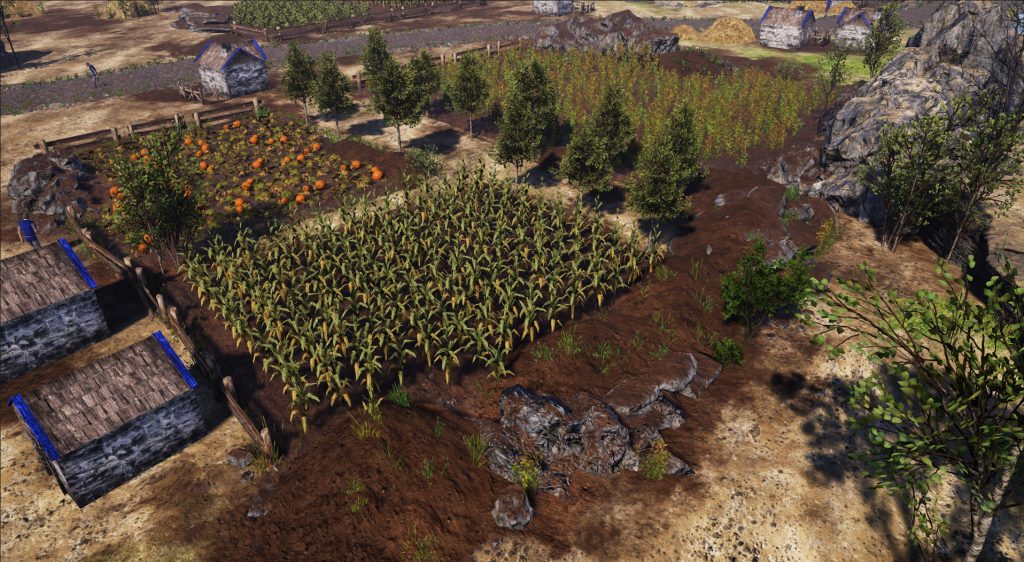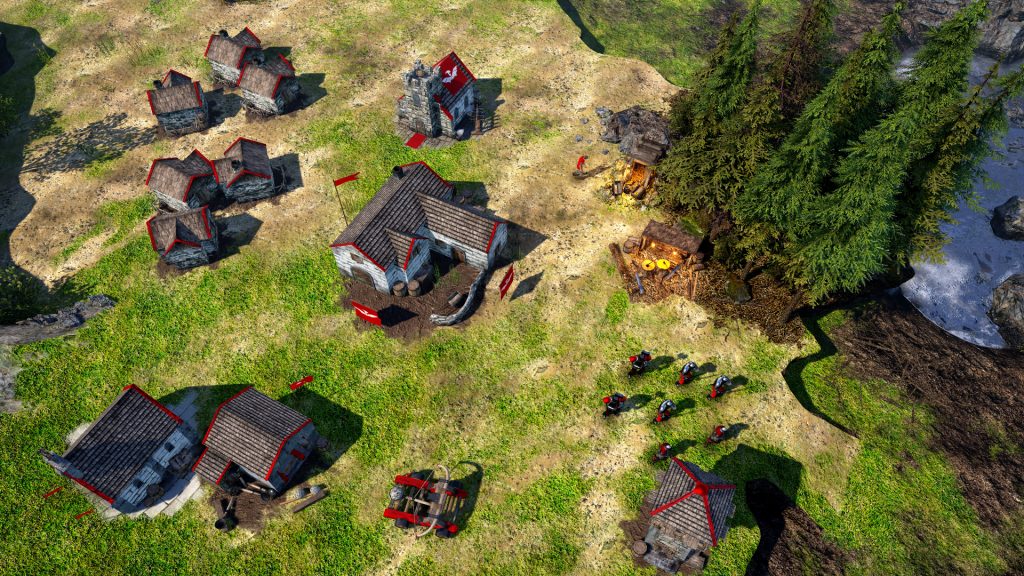Bannermen Captures the Spirit of the RTS Revival
A long quiet genre is finally up on the rise again. RTS is definitely on the way back to its former heights, with both 2018 & late 2017 brimming with new entries. Bannermen looks set to stand shoulder to shoulder with the imminent giants.
The rapid technological march of the early noughties saw many RTS developers gobbled up, while others simply moved onto to different, deeper genres. Now, though, with the wargaming and grand strategy niches filling up nicely, and the return of IPs like Cossacks, Spellforce, and Sudden Strike, there’s a lot of demand for other games to join up alongside the few mainstays still fighting the good fight: Blizzard, Petroglyph and Firefly Studios.
To say that Bannermen is well placed and timed is an understatement, but to simply focus on the timing would be folly because it’s also an exercise in something the genre often failed to do, a technical coppicing of the game’s elements; refining over going big.
Real Time Sacrament
Pathos Interactive actually describe Bannermen’s setting as fantasy-medieval, although this is because the game isn’t historical; the units, buildings and world design may be extremely reminiscent of moments within Europe’s middle-ages, but the geographic diversity and single-player campaign are tweaked and finessed for better play.
This means you’ll still be using siege weapons, archers and foot soldiers, but you won’t be warring for Reims, Chiny, or Viviers. In fact, the single player campaign follows a fallen-noble fighting their way back up to a position of power, the game quite literally captures most of the tropes of the era, without having to rely too heavily on sticking to history.
Deliberate efforts have been made in order to keep the game as skill based as possible; where certain other RTS games (Seven Kingdoms, AOEII HD) have prided themselves on diversity of races to play as, Bannermen simply has one, highly balanced one. This also means that the focus on the technology rush is lessened, in so much as it’s also been thinned and streamlined. Resources, as well, are stripped down to gold and ‘construction stuff’, two resources.
Chivalry Amongst Boulders
There is something that I’ve deliberately not mentioned thus far, as I’ve been busy talking about what’s been removed and what has been cut-back. Terrain deformation.
The first time I saw proper terrain deformation in a real time strategy game was the destruction of bridges in KKND, then the blown out buildings you could station troops within in Red Alert II. Then it all went a big quiet, like the genre. Back in 2013, with Company of Heroes 2, the idea came back in a big way. In Company of Heroes 2 some maps, in some climes, would have frozen lakes — both an amazing shortcut, and a possible death-trap due to the fact you are literally walking on thin ice. Move your biggest, baddest tanks over the ice and you can sweep an enemy position clear in moments, but if you’re spotted and a mortar strikes true, then you’ve just sunk a bank-load of ordinance. Seeing that done so well, in such a manner that it’s not overpowered due to the risk, I was sure that it was exactly the kind of thing we’d see more in future games — disappointingly it’s taken over four years to get to this point.
Bannermen’s terrain deformation was, as Christoffer informed me, originally just a cool effect. Playtesters loved it however, and asked for more and more. All of a sudden the odd boulder, or lightning strike, was replaced by large ambush points, and brutal lightning flurries. Broken ice is in there too, and —most interestingly— so is fire.
And, this is where the game DOES get a little bit fantasy, players will be able to build temples at certain points on the map and gain control over certain weather powers. But, even if you are not directly in control of the weather you will certainly be able to benefit from them; an enemy’s troop destroyed by a bolt, or your rival’s nearby forest consumed by flame… it, much like with the CoH2 example of ice, is enough to transform a match while also being well balanced.
Well, you might not feel it’s balanced when an avalanche tears up a part of the map you’ve been using to your advantage — but it’ll certainly not get old fast.
Bring your own Ballista
The real elephant in the room is multiplayer; and rightfully so. For a game which initially feels like somebody took a vertical slice from a custom AOEII multiplayer match for the core of their game, it makes perfect sense that the game makes large strides in that area.
Custom set-ups, up to eight-player multiplayer matches, as well as a multiplayer ladder system all bode well for the game, and combining that with the developer’s overt willingness to adapt and implement feedback from the community all makes for a very interesting mix.
Bannermen (Developer’s Website) is heading to Kickstarter later this month, the idea being that they are seeking a larger pool of feedback rather than direct funding. The game is currently planned for an early 2018 release date on PC.



Comments are closed.